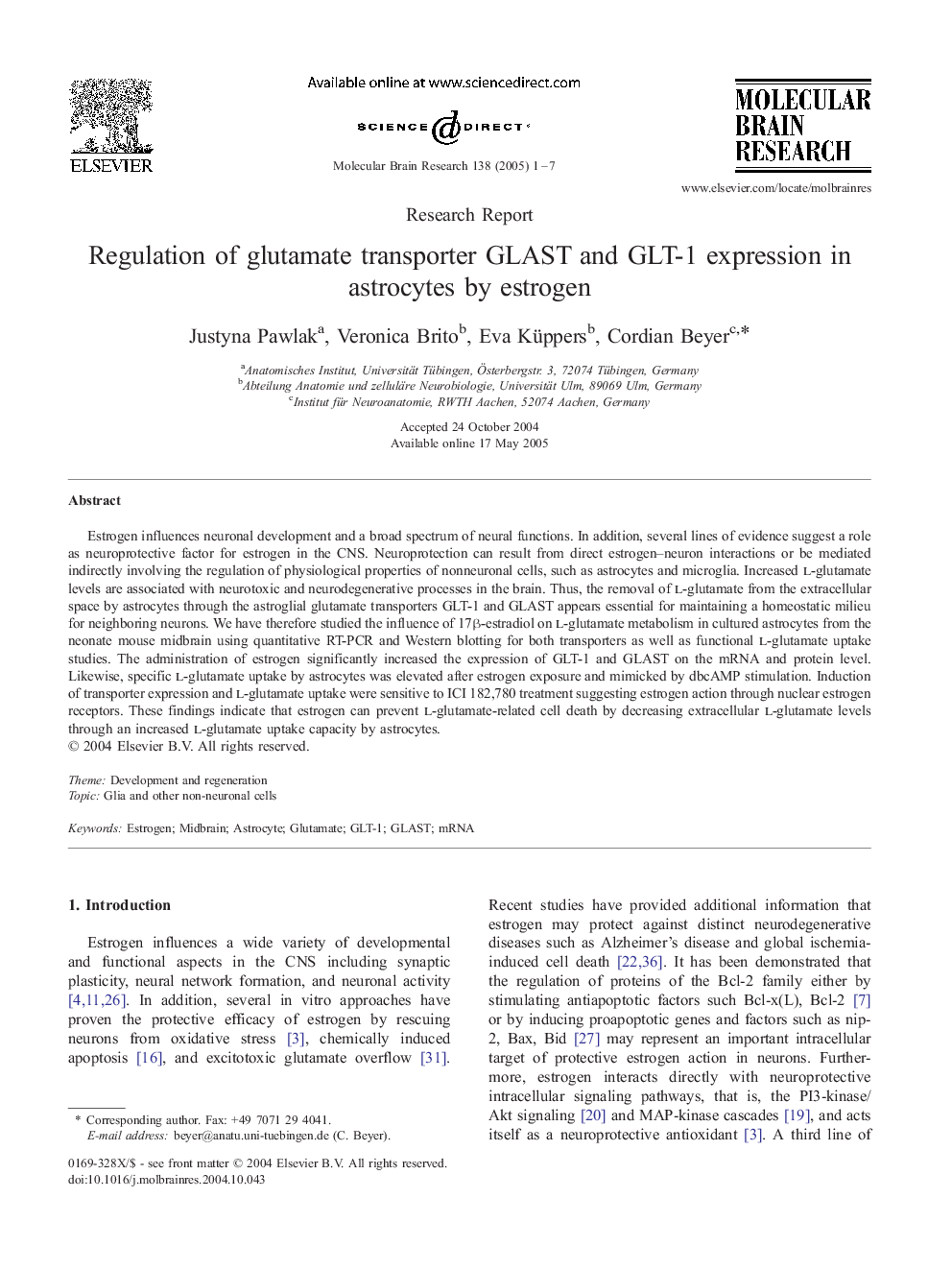| Article ID | Journal | Published Year | Pages | File Type |
|---|---|---|---|---|
| 9410624 | Molecular Brain Research | 2005 | 7 Pages |
Abstract
Estrogen influences neuronal development and a broad spectrum of neural functions. In addition, several lines of evidence suggest a role as neuroprotective factor for estrogen in the CNS. Neuroprotection can result from direct estrogen-neuron interactions or be mediated indirectly involving the regulation of physiological properties of nonneuronal cells, such as astrocytes and microglia. Increased l-glutamate levels are associated with neurotoxic and neurodegenerative processes in the brain. Thus, the removal of l-glutamate from the extracellular space by astrocytes through the astroglial glutamate transporters GLT-1 and GLAST appears essential for maintaining a homeostatic milieu for neighboring neurons. We have therefore studied the influence of 17β-estradiol on l-glutamate metabolism in cultured astrocytes from the neonate mouse midbrain using quantitative RT-PCR and Western blotting for both transporters as well as functional l-glutamate uptake studies. The administration of estrogen significantly increased the expression of GLT-1 and GLAST on the mRNA and protein level. Likewise, specific l-glutamate uptake by astrocytes was elevated after estrogen exposure and mimicked by dbcAMP stimulation. Induction of transporter expression and l-glutamate uptake were sensitive to ICI 182,780 treatment suggesting estrogen action through nuclear estrogen receptors. These findings indicate that estrogen can prevent l-glutamate-related cell death by decreasing extracellular l-glutamate levels through an increased l-glutamate uptake capacity by astrocytes.
Keywords
Related Topics
Life Sciences
Neuroscience
Cellular and Molecular Neuroscience
Authors
Justyna Pawlak, Veronica Brito, Eva Küppers, Cordian Beyer,
